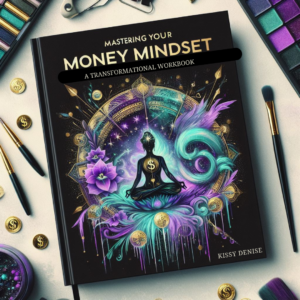Influence is the power and the ability to personally affect others’ actions, decisions, opinions, or thinking.
Ultimately, influence allows you to get things done and achieve desired outcomes.
For some influence comes naturally to you by simply stating your opinions. You’re so darn opinionated you can’t dare to not have an opinion on something, and because your mind works that way, you’re naturally an influencer.
At a basic level, influence is about compliance — getting someone to do what you want them to do (or at least not to undermine it). But genuine commitment from other people is often required for you to accomplish key goals and tasks.
Early in your life contributor roles or career, influence is about working effectively with people over whom you have no authority. It requires the ability to present logical and compelling arguments and engaging in give-and-take. In senior-level or executive roles, influence is focused more on steering long-range objectives, inspiration, and motivation.
For some, you have such dominance and influence, but you try not to stand out at work, and people at work don’t really like you… (Psst. It’s because you’re supposed to own your own business.)
But back to INFLUENCE… Social media works the same way, as corporate America, but it’s a lot more fun.
I’ve found that influencing tactics fall into 3 categories: cooperative, emotional, or logical. I call this influencing with heart, head, and hands.
- Logical appeals tap into people’s rational and intellectual positions. You present an argument for the best choice of action based on organizational benefits, personal benefits, or both.
- Emotional appeals connect your message, goal, or project to individual goals and values. An idea that promotes a person’s feelings of well-being, service, or sense of belonging has a good chance of gaining support.
- Cooperative appeals involve collaboration (what will you do together?), consultation (what ideas do other people have?), and alliances (who already supports you or has the credibility you need?). Working together to accomplish a mutually important goal extends a hand to others in the organization and is an extremely effective way of influencing.

To maximize your personal influence, you’ll want to become skilled in all 3 styles. Decide which tactics will reap the most support for a specific task or strategy and employ one or more approaches. To understand which tactics might work best, consider the following:
Assess the situation. Why are you involved in this niche? Why do you need this niche’s or Influencer’s support? What outcomes are you trying to achieve by influencing this person? Be clear about whom you need to influence and what you want to accomplish.

Know your audience. Identify and understand your stakeholders. Each will have special concerns and issues, as well as their own agenda, perspectives, and priorities. Various groups and individuals will require different approaches for influencing. Tailor your influencing strategy for the particular person or niche — considering individual personalities goals, and objectives — as well as your niche’s problems, dreams and solutions.
Review your past efficiency level of influence. What tactics do you use most often? Which seem to be most effective? What new tactics could you try with this influencer, niche, product or service? Draw on others for advice or coaching, too. For example, if you always focus on the logical appeals, have an online business bestie who is a strong collaborator help you think through your collaboration tactics or attraction marketing materials.
Brainstorm your approach. What tactics would work best? Which logical appeals will be most effective? How could you make an emotional or cooperative appeal? What specifically could you say and do to get the niche to pull the trigger and buy in to save their life? Anticipate possible responses and prepare your reply. What counterarguments could you use? What additional influencing tactics would be helpful? Write this in the marketing material. This is why you do your research on your market so that they realize you know and understand them when you’re answering the questions in their head before they even speak to you.
At first, you might want to try out new influencing tactics in low-risk situations, in a test group or practice these skills 1-on-1 in sales calls or simply throw it on IG or Facebook and see who responds. As you become more versatile, you’ll gain confidence in your ability to influence your followers, larger groups like at a conference, and even other influencers. Being able to persuade in higher-stakes situations, gives you a gleaming, jeweled gold crown, and maybe even a seat next to Oprah.
If what you’re throwing at the wall isn’t working, consider changing tactics right away if sales, lack of buy-in or support from followers stalls.
Would a more logical, emotional, or collaborative approach make a difference? If so, go ahead and try out a new angle — you might be more influential that you realized. 9 times out of ten, you simply have to speak your niche’s or target’s love language.












